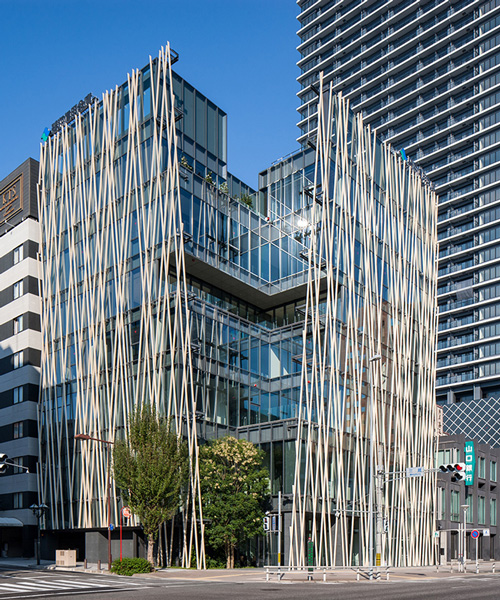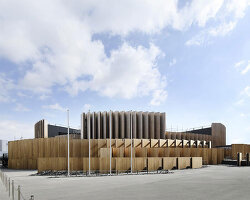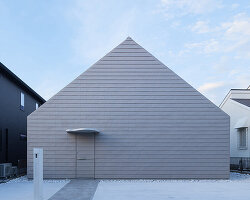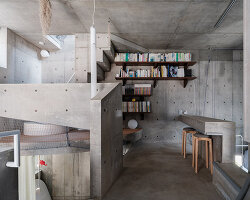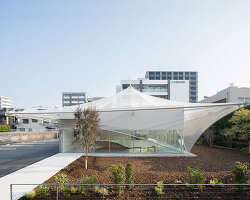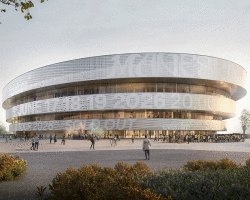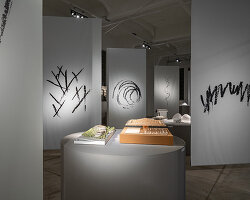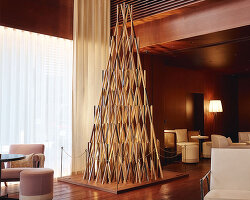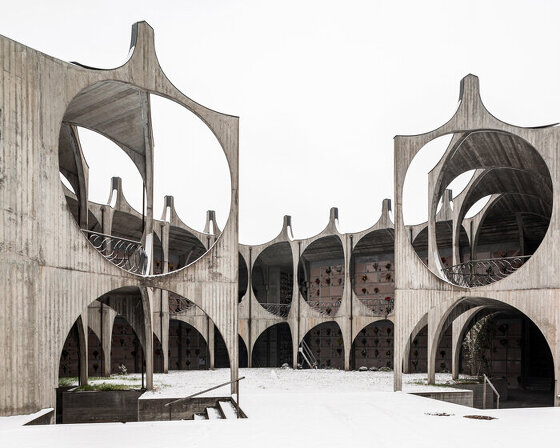‘the façade is the most important part of the project.‘ – notes kengo kuma in a recent interview with designboom. known for his use of natural materials, the architect’s portfolio illustrates this notion even in the most unlikely buildings, encasing a japanese bank in a wooden cladding to highlight the structure within its industrial landscape.
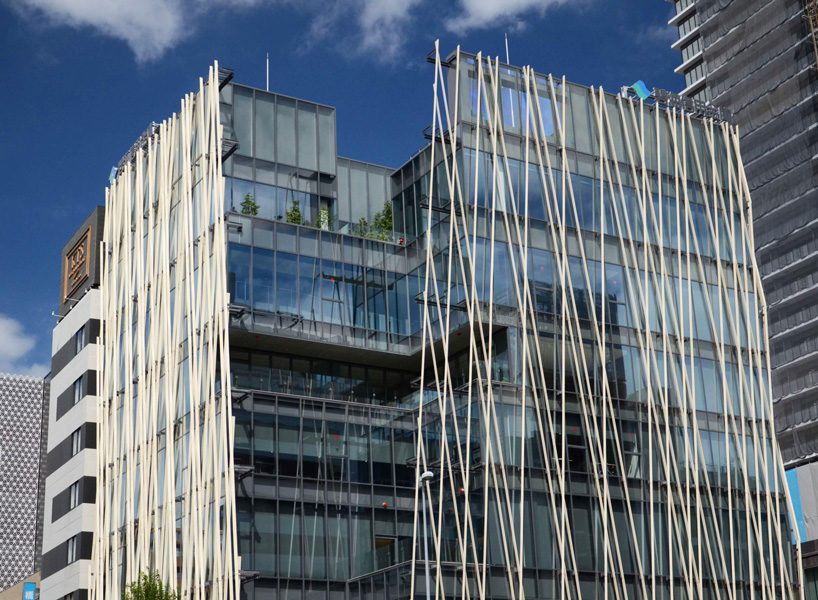
images courtesy of kengo kuma & associates unless stated otherwise
photos by kawasumi
located in nagoya city, the misono branch of the hekikai shinkin bank features kuma‘s trademark material: wood. planks are diagonally attached, in contrast to the rigid lines that make up the structure’s exterior glass panelling. their nature is complimented by tall trees planted at the base of the building.
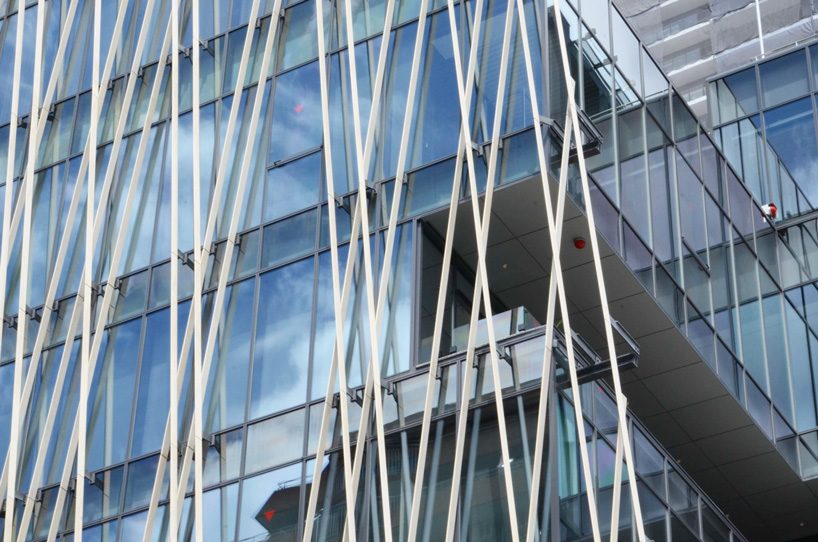
image courtesy of accoya
the way natural daylight interacts with spaces is often a highlighting factor in his work. by covering the seven-story glass building in a structure of narrow slats, the façade is akin creates effects akin to a japanese forest. as such, light interacts with the interlaced cladding to create the impression of sunbeams peering into the interior.
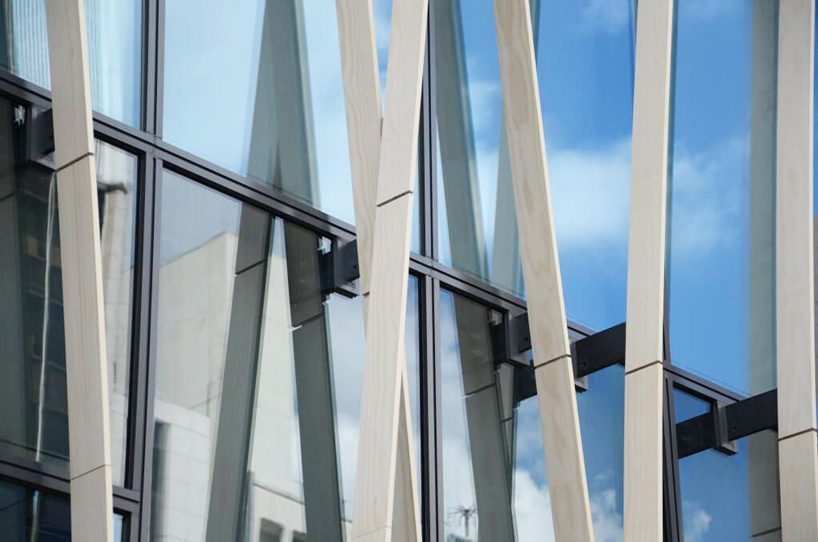
image courtesy of accoya
kuma regularly uses wood in his projects in an attempt to harmonise structures with their natural environment. currently under construction in tokyo, the architect’s design for the country’s new national stadium also features a wooden latticed façade. the stadium will act as the centrepiece to the olympics when they begin in 2020.
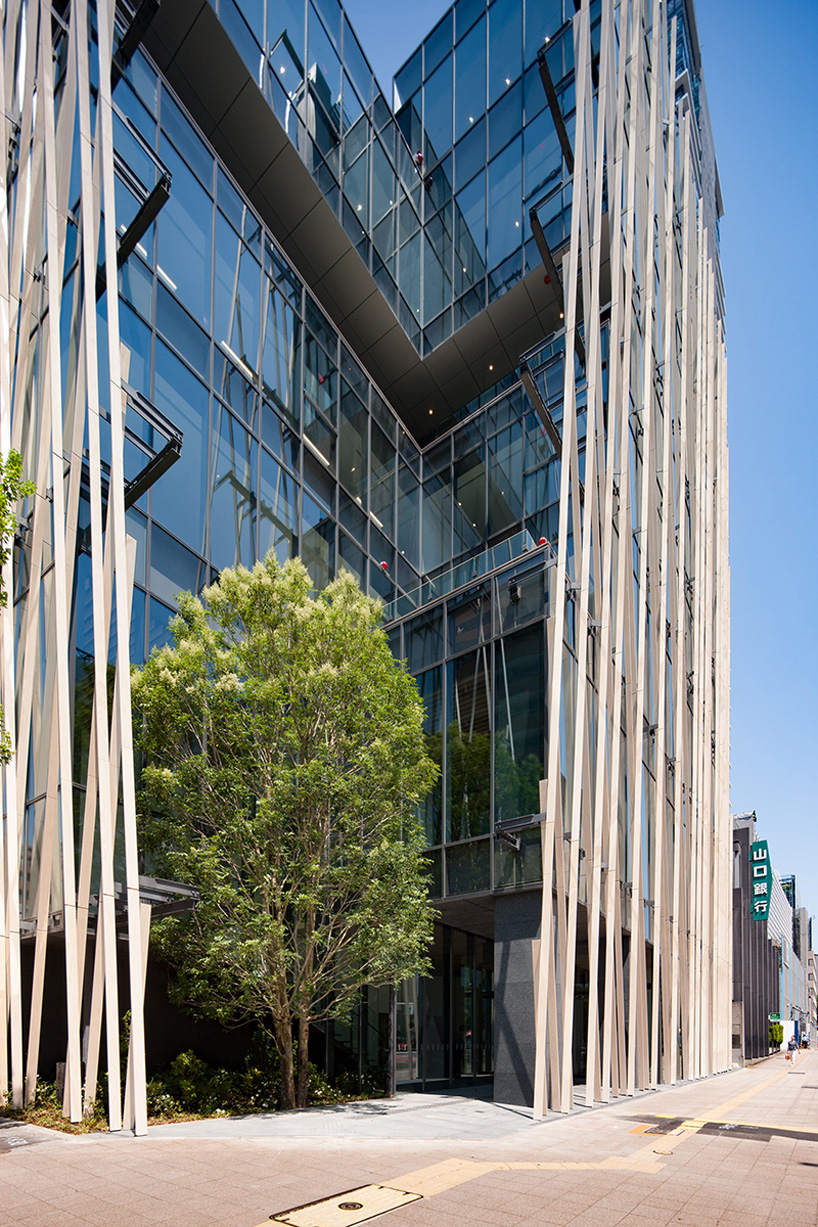
‘our approach is very different to the approach of architects in the 20th century. in the 20th century, architects were trying to create contrast with the environment’, kuma continues. ‘we try to create harmony with the environment, but we have some methods. one is to use local materials.’
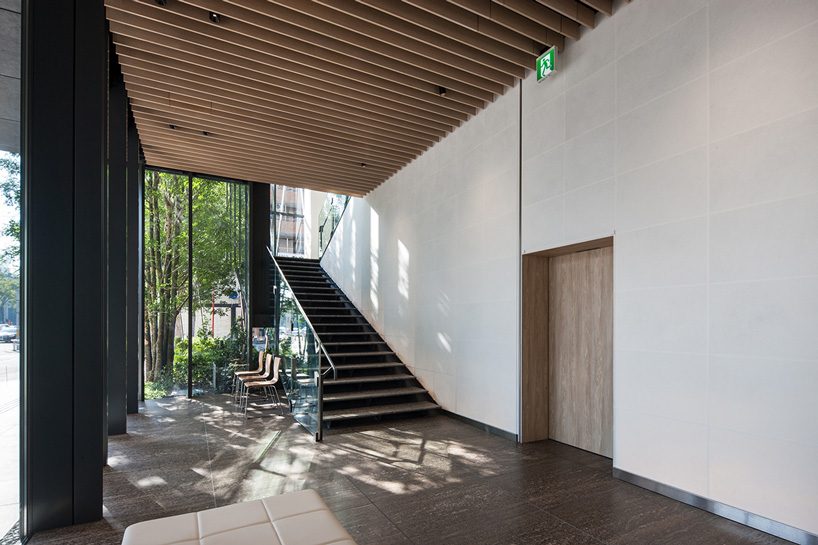
other projects promoting natural materials include the V&A in dundee, an eco-luxury hotel in paris, and an enchanted forest pop-up inside for valextra.
